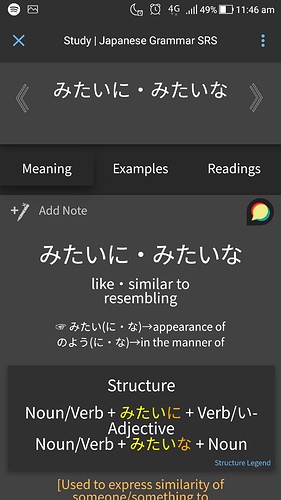like・similar to, resembling
Structure
- Noun/Verb + みたいに + Verb/いAdj
- Noun/Verb + みたいな + Noun
みたいな is the adjective form (it is used to modify nouns)
みたいに is the adverbial form (it is used to modify adjectives, verbs, and other adverbs)
みたい(だ) is the predicative form used at the end of a sentence.
みたいに(and ように) is used in general to show the similarity of something to something else in appearance or in a manner of doing something.
みたい(and ようだ) also has this use + conjecture(possibility of something) (Feedback - Suggested Improvements/Feature Request)











